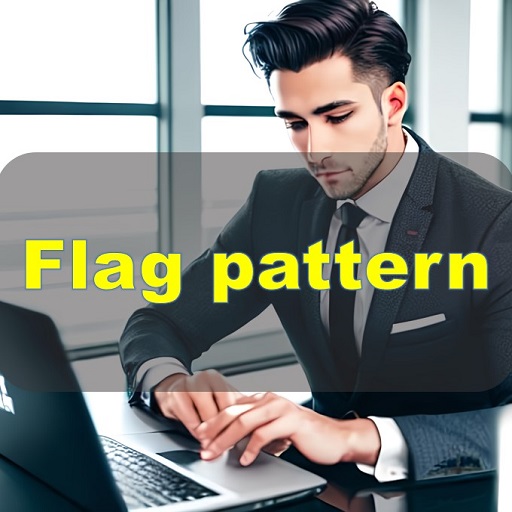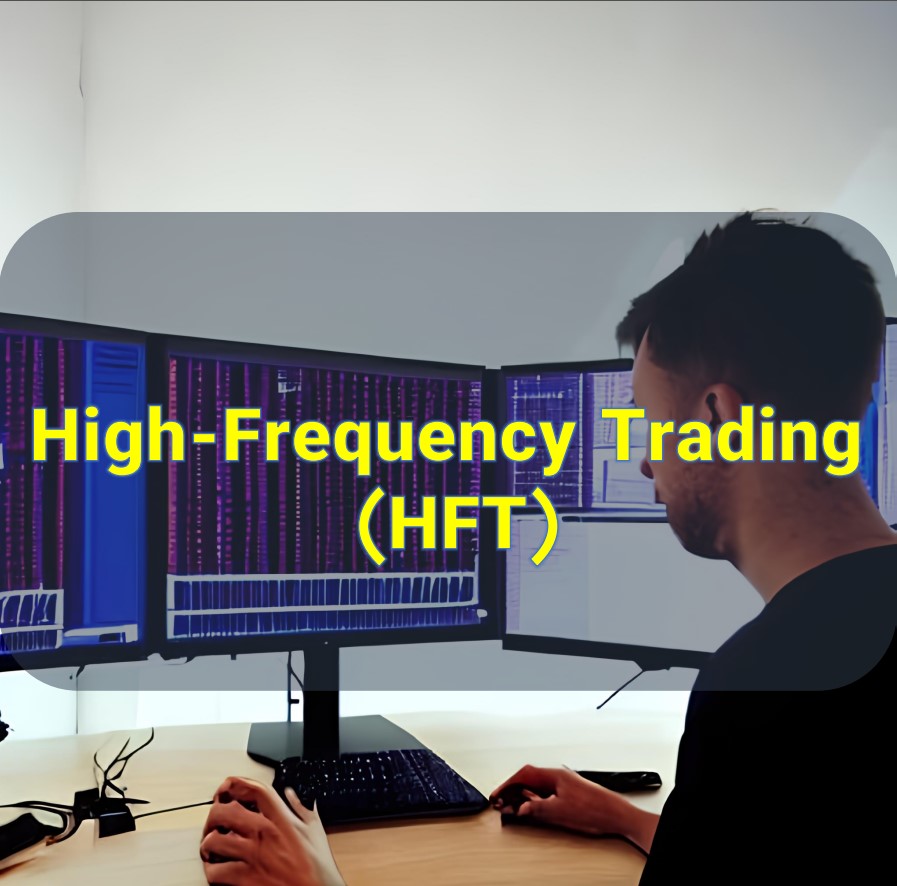In the context of forex trading, the term “flag pattern” refers to a technical analysis pattern that can occur on price charts. It is a continuation pattern that can provide insights into the future direction of a currency pair’s price movement.
The flag pattern typically appears after a strong and rapid price movement, known as the “flagpole” or “pole.” The subsequent price action forms a rectangular or parallelogram-shaped consolidation, resembling a flag. This consolidation phase represents a temporary pause or rest in the market before the price resumes its previous trend.
Traders consider a flag pattern as a potential continuation signal, suggesting that the price is likely to resume its previous trend after the consolidation period ends. Once the flag pattern is complete, traders often anticipate a breakout in the same direction as the initial flagpole, accompanied by increased trading volume.
It’s important to note that while flag patterns can provide valuable insights, they are not foolproof indicators, and traders should consider using them in conjunction with other technical analysis tools and fundamental factors for making informed trading decisions.
Components of the flag pattern
The flag pattern consists of two main components:
Flagpole
The flagpole is the initial strong and rapid price movement that precedes the formation of the flag pattern. It can be either an upward (bullish) or downward (bearish) movement. The flagpole represents a strong surge in buying or selling pressure and sets the stage for the subsequent consolidation phase.
Flag
After the flagpole, the price enters a consolidation phase where it moves within a relatively narrow and sloping range. The flag is formed as the price creates lower highs and higher lows, converging towards a point. The flag can have different shapes, such as a rectangle, parallelogram, or pennant, but it typically represents a period of price stabilization or indecision.
These two components work together to create the flag pattern. The flagpole provides the initial impulsive move, while the flag represents a pause or rest in the market before the price potentially continues in the direction of the flagpole.
It’s worth noting that the flag pattern is considered a continuation pattern, indicating that the price is likely to resume its previous trend after the consolidation phase. Traders often look for a breakout in the same direction as the flagpole, accompanied by increased trading volume, as a confirmation of the pattern’s validity.
Application of the flag pattern
The flag pattern is widely used in technical analysis by forex traders to identify potential trading opportunities and make informed decisions. Here are some applications of the flag pattern:
Trend continuation
The flag pattern is primarily used to identify potential continuations of an existing trend. If a flag pattern forms after a strong and decisive price move, it suggests that the price may continue in the same direction once the consolidation phase is complete. Traders can use this pattern to enter trades in alignment with the prevailing trend.
Entry and exit points
Traders often look for specific entry and exit points based on the flag pattern. A common approach is to wait for a breakout from the flag pattern. In a bullish flag, a breakout above the upper boundary of the flag is seen as a potential entry signal for a long (buy) trade. Conversely, in a bearish flag, a breakout below the lower boundary is considered a potential entry signal for a short (sell) trade. Traders may also set stop-loss orders below the flag pattern’s lows or highs, depending on the trade direction.
Price targets and risk assessment
The flag pattern can also help traders estimate potential price targets and assess risk-to-reward ratios. By measuring the height of the flagpole and projecting it from the breakout point, traders can estimate a potential price target for the continuation move. Additionally, the flag pattern can assist in determining stop-loss levels based on the pattern’s boundaries and the trader’s risk tolerance.
Confirmation with other indicators
While the flag pattern itself can be a valuable signal, traders often combine it with other technical indicators or chart patterns for confirmation. For example, traders might look for bullish candlestick patterns, such as bullish engulfing or hammer formations, near the lower boundary of a bullish flag to strengthen the bullish bias. Additionally, using indicators like moving averages, volume analysis, or oscillators can provide additional confirmation signals.
It’s important to remember that no trading pattern or strategy guarantees success. Traders should practice proper risk management techniques, conduct thorough analysis, and consider multiple factors before making trading decisions based on the flag pattern or any other technical analysis tool.
What does the flag pattern indicate?
The flag pattern is a technical analysis pattern that indicates a potential continuation of the current price trend after a period of consolidation. Here are the key indications of the flag pattern:
Trend continuation
The flag pattern suggests that the prevailing trend is likely to resume once the consolidation phase is complete. If the price was moving in an upward (bullish) direction before the flag pattern formed, the breakout from the flag pattern is expected to lead to further upward movement. Similarly, if the price was moving downward (bearish) before the flag pattern, the breakout is anticipated to result in additional downward movement.
Temporary pause or consolidation
The flag pattern indicates a temporary pause or consolidation in the market after a strong and rapid price movement (flagpole). This consolidation phase allows the market participants to digest the previous price action, reassess the supply and demand dynamics, and potentially prepare for the next price move.
Price stabilization and indecision
During the flag pattern, the price typically moves within a relatively narrow and sloping range, forming lower highs and higher lows. This pattern reflects a period of price stabilization and indecision among market participants. It suggests that buyers and sellers are temporarily in balance, and neither side has a clear advantage.
Potential breakout and increased volatility
Traders often anticipate a breakout from the flag pattern as an indication of the resumption of the previous trend. The breakout is expected to be accompanied by increased trading volume and potentially higher volatility, as market participants react to the resolution of the consolidation phase.
It’s important to note that while the flag pattern provides indications of potential price continuation, it is not infallible. Traders should consider using the flag pattern in conjunction with other technical analysis tools, indicators, and fundamental factors to strengthen their trading decisions. Risk management techniques, such as setting appropriate stop-loss levels, should also be employed to mitigate potential losses.
How to trade using the flag pattern
Trading using the flag pattern typically involves the following steps:
Identify the flag pattern
The first step is to identify the flag pattern on a price chart. Look for a strong and rapid price movement, known as the flagpole, followed by a period of consolidation where the price forms a flag shape. Confirm that the flag pattern meets the criteria of lower highs and higher lows within the flag structure.
Determine the direction
Determine the direction of the prevailing trend before the flag pattern formed. If the trend was upward (bullish) before the flag, you’ll be looking for a bullish flag pattern. If the trend was downward (bearish), you’ll be looking for a bearish flag pattern.
Entry point
Wait for a breakout from the flag pattern to signal a potential entry point. In a bullish flag, look for a breakout above the upper boundary of the flag. In a bearish flag, look for a breakout below the lower boundary. Some traders prefer to wait for a confirmation candlestick or a certain percentage breakout beyond the flag boundaries to reduce false signals.
Confirm with volume
Consider the volume during the breakout. A breakout accompanied by increased trading volume tends to provide more reliability to the pattern.
Set stop-loss and take-profit levels
Determine appropriate stop-loss and take-profit levels to manage risk and potential profits. Place a stop-loss order below the flag’s low in a bullish flag or above the flag’s high in a bearish flag. Take-profit levels can be estimated by measuring the height of the flagpole and projecting it from the breakout point.
Monitor the trade
Once in the trade, closely monitor the price action and manage the trade according to your trading plan. Consider using trailing stop-loss orders to protect profits as the price continues in your desired direction.
Consider additional confirmation
While the flag pattern can be a reliable signal, consider confirming it with other technical indicators or chart patterns. Look for supporting signals from oscillators, moving averages, or other chart patterns to strengthen the trading decision.
Remember that no trading strategy guarantees success, and risk management is crucial. Practice proper risk management techniques, such as position sizing, and be prepared to adjust or exit trades if the market conditions change. It is recommended to backtest and practice trading strategies before applying them with real money.
Flag pattern feature
The flag pattern exhibits several key features that traders often observe when analyzing price charts. These features include:
Flagpole Length
The flag pattern begins with a flagpole, which represents the initial strong and rapid price movement. Traders pay attention to the length of the flagpole as it provides an indication of the strength and significance of the preceding price move. Generally, a longer and more pronounced flagpole suggests a stronger and more decisive price action.
Flag Shape
The consolidation phase of the flag pattern forms a flag shape, which can take various forms such as a rectangle, parallelogram, or pennant. The flag shape is characterized by converging trend lines, with the upper and lower boundaries forming a channel or range within which the price consolidates. The symmetry and slope of the flag shape can provide additional insights into the pattern’s reliability.
Lower Highs and Higher Lows
One of the key features of the flag pattern is the formation of lower highs and higher lows within the flag structure. This indicates a narrowing range of price movement and reflects a period of price stabilization and indecision. Traders observe these alternating highs and lows to confirm the validity of the flag pattern.
Volume
Volume analysis is an important aspect of flag pattern identification. Traders typically look for an increase in trading volume during the flagpole, signifying strong market participation during the initial price move. During the flag consolidation phase, trading volume often decreases, indicating reduced activity and market indecision. A volume surge during the breakout from the flag can provide further confirmation of the pattern.
Breakout
The flag pattern is considered complete when a breakout occurs from the flag structure. Traders watch for a decisive price move beyond the upper or lower boundary of the flag, signaling the resumption of the prevailing trend. A breakout should ideally be accompanied by an increase in trading volume and can serve as a trigger for entering trades in the direction of the breakout.
These features collectively contribute to the identification, confirmation, and subsequent trading decisions related to the flag pattern. Traders carefully analyze these characteristics to determine the potential continuation of the trend and to establish appropriate entry, stop-loss, and take-profit levels.
How many types of flag patterns are there?
In forex trading and technical analysis, there are two primary types of flag patterns: bullish flag patterns and bearish flag patterns. These patterns are defined by their relationship to the prevailing trend and their anticipated price movements.
Bullish Flag Pattern
A bullish flag pattern forms within an uptrend and indicates a temporary consolidation or pause before the price potentially continues its upward movement. It consists of a flagpole, which is a strong and rapid upward price move, followed by a period of consolidation forming a flag shape. The flag is characterized by lower highs and higher lows, indicating a narrowing range. Traders anticipate a breakout to the upside, signaling a potential continuation of the bullish trend.
Bearish Flag Pattern
A bearish flag pattern forms within a downtrend and suggests a temporary consolidation before the price potentially continues its downward movement. Similar to the bullish flag pattern, it consists of a flagpole, which is a strong and rapid downward price move, followed by a consolidation period forming a flag shape. The flag exhibits higher lows and lower highs, indicating a narrowing range. Traders anticipate a breakout to the downside, signaling a potential continuation of the bearish trend.
Both bullish and bearish flag patterns are considered continuation patterns, as they typically indicate that the prevailing trend is likely to resume after the consolidation phase. However, it’s important to note that not all consolidation patterns within a trend are flags. Other patterns, such as rectangles, triangles, and pennants, can also occur, each having their own distinct characteristics and implications.
Traders rely on their analysis and understanding of these different types of patterns to make informed trading decisions, manage risk, and capitalize on potential price movements.
How to identify the flag pattern in the chart?
Identifying the flag pattern on a price chart involves analyzing the price structure and observing specific characteristics. Here are some steps to help you identify the flag pattern:
Determine the Prevailing Trend
Before looking for a flag pattern, identify the prevailing trend in the market. Is it an uptrend or a downtrend? This step is crucial as the flag pattern is a continuation pattern that forms within an existing trend.
Look for a Flagpole
Search for a strong and rapid price movement that represents the flagpole. In an uptrend, the flagpole is an upward price surge, while in a downtrend, it is a downward price drop. The flagpole should have a noticeable increase in volume, indicating strong market participation.
Observe the Consolidation Phase
After the flagpole, there is a period of consolidation that forms the flag pattern. This phase is characterized by price movements within a narrowing range. Look for price action that creates lower highs and higher lows, forming converging trend lines. The more distinct the convergence, the more reliable the flag pattern is considered.
Confirm Symmetry and Slope
Assess the symmetry and slope of the flag pattern. The upper and lower boundaries of the flag should be roughly parallel, forming a channel or range. Additionally, the slope of the flag should be against the prevailing trend, meaning it should slope opposite to the direction of the flagpole.
Validate Volume
Consider the volume during the flag pattern. Typically, the volume should decrease during the consolidation phase, indicating reduced market activity and indecision. However, it is common to observe an increase in volume during the breakout from the flag pattern.
Wait for a Breakout
The flag pattern is confirmed when there is a breakout from the consolidation phase. In a bullish flag, the breakout occurs above the upper boundary of the flag, while in a bearish flag, it occurs below the lower boundary. The breakout should ideally be accompanied by increased volume, providing additional confirmation.
By following these steps and analyzing the price chart, you can identify potential flag patterns. It’s important to note that flag patterns require subjective interpretation, and not all consolidations are necessarily flag patterns. Traders often combine the identification of flag patterns with other technical analysis tools and indicators to strengthen their trading decisions.







